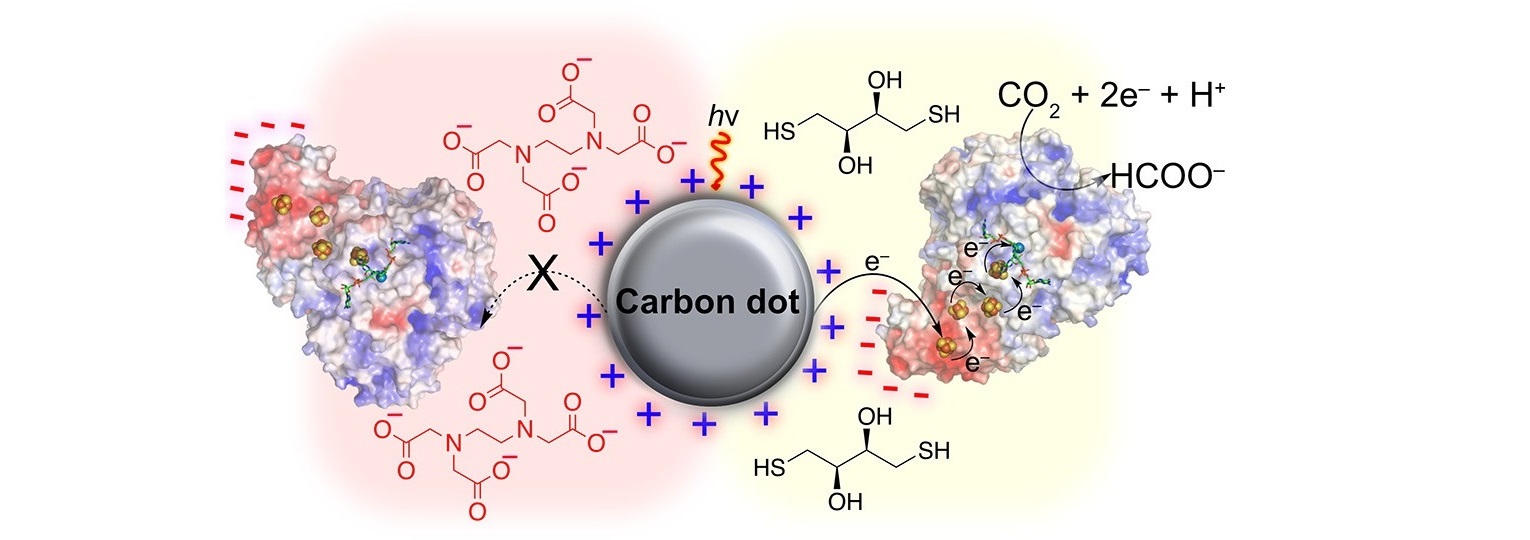-
Semi-artificial photosynthesis
Why not combine the best synthetic light absorbers with the
best catalysts in biology, aka enzymes, for highly efficient and
selective solar-to-chemical conversion?
Semi-artificial photosynthesis combines synthetic light absorbers
with enzymes and aims to overcome the limitations of natural and
artificial photosynthesis by assembling biohybrid photocatalysts
with unique properties or record catalytic performance. Enzymes
are macromolecular biological catalysts that have been naturally
selected over billions of years to perform specific reactions with
high selectivity and efficiency, thus displaying superior
performance to synthetic catalysts for many reactions such as CO2
reduction. To unlock the full potential of enzymes immobilised on
semiconductors, the understanding and optimisation of the
biotic-abiotic interface is essential and our laboratory thus
employs a suite of chemical biology and biophysical methods,
including advanced (photo)electrochemical techniques such as
rotating ring disk electrochemistry, resonance Raman and infrared
spectroscopy and quartz crystal microbalance measurements. To
develop enzyme and cell-based hybrid (photo)electrochemical
devices with light absorbing semiconductors such as metal oxides,
perovskites and silicon we design high-surface area electrode
materials, such as metal oxides, carbon nanotubes and graphene as
conductive supports with high loading. We also study
photocatalytic systems with semiconducting nanoparticles such as
carbon dots, graphitic carbon nitride and quantum dots for hybrid
solar fuel generation in suspension.
Selected Publications

Connecting biological and synthetic approaches for electrocatalytic CO2 reduction.
Cobb, S. J.; Rodríguez-Jiménez, S.; Reisner, E. Angew. Chem. Int. Ed., 2024, 63, e202310547.





